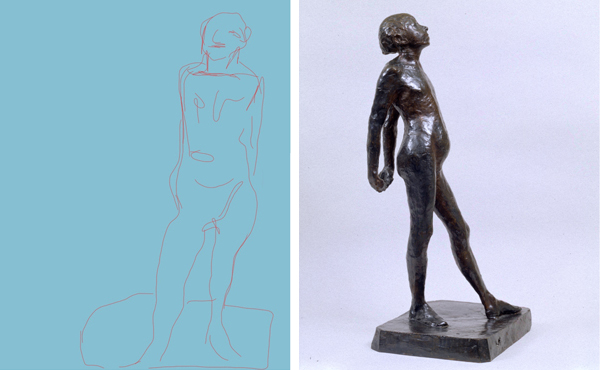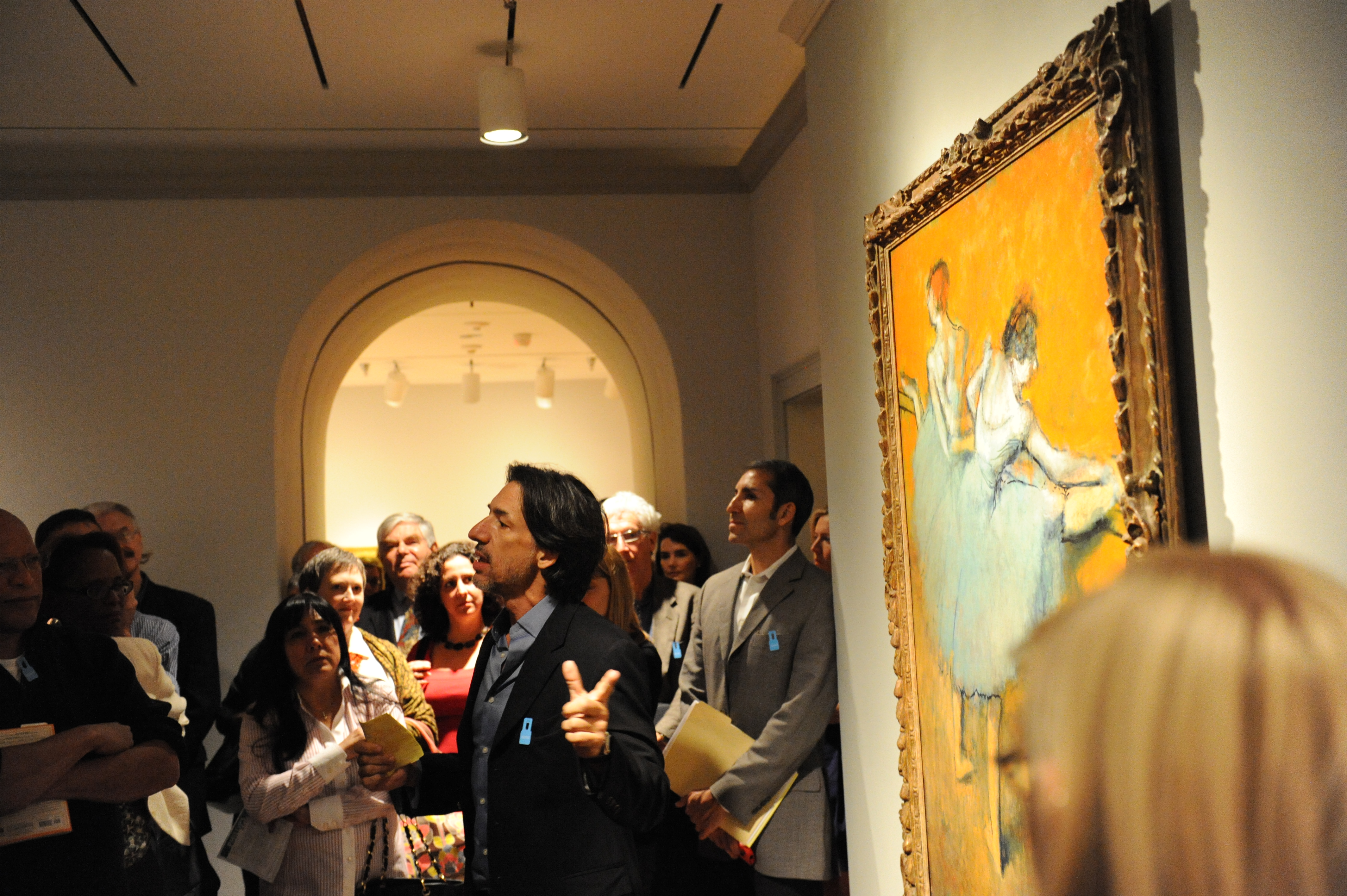
Detail, Hilaire-Germain-Edgar Degas, Dancers at the Barre, early 1880s–c. 1900. Oil on canvas, 51 1/4 x 38 1/2 in. The Phillips Collection, Washington, D.C. Acquired 1944.
If you missed our Conservator’s Perspective talk last week with Head of Conservation Elizabeth “Lilli” Steele and Head of Paper Conservation at the Library and Archives of Canada Anne Maheux, check out this 2008 Washingtonian article detailing Lilli’s experience delving into Degas’s masterpiece. For those who love the world of artists’ tools, artistic process, and a good mystery, this is a must-read.


